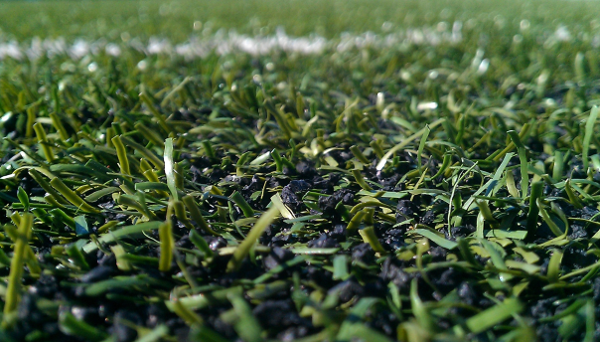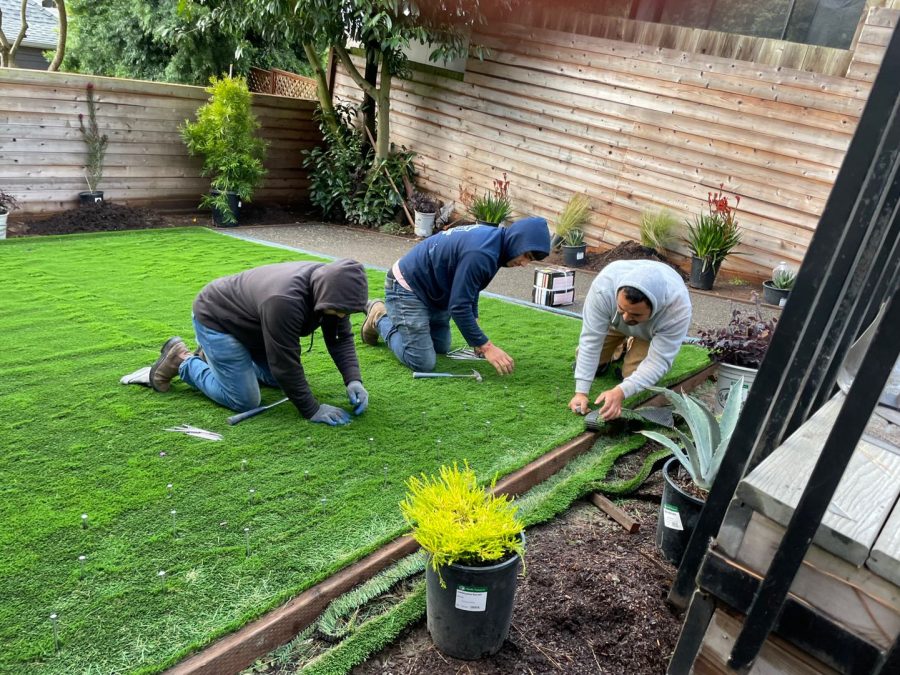See Why Homeowners Prefer Synthetic Grass for Lasting Landscaping Practices
As property owners increasingly focus on sustainability in landscape design, man-made lawn has actually emerged as a compelling alternative to conventional grass. What remains to be discovered is the complete scope of advantages that fabricated grass can use to home owners and the atmosphere alike.
Water Preservation Perks
One of one of the most significant advantages of synthetic grass is its role in water conservation. Traditional yard yards require significant quantities of water to maintain their lush look, usually bring about overuse of local water sources, specifically in dry areas. On the other hand, synthetic grass eliminates this demand completely, as it does not require watering. This not just conserves water however likewise minimizes the strain on metropolitan water supply, specifically throughout dry spell conditions.
Additionally, the setup of synthetic grass can add to an extra sustainable landscape. Homeowners can significantly reduce their water expenses, permitting reallocation of resources to other environmental campaigns or family uses. Furthermore, synthetic grass is developed to hold up against numerous climatic conditions without the demand for additional watering, making it an ideal selection for areas encountering water scarcity.
The ecological benefits prolong beyond immediate water cost savings. By minimizing water usage, man-made lawn aids to mitigate the influences of environment change, protecting essential communities that are intimidated by excessive water removal. As lasting landscaping practices acquire grip, synthetic grass emerges as an accountable selection for home owners looking for to develop eco-friendly outside spaces.
Decreased Upkeep Initiatives
Fabricated turf considerably reduces maintenance efforts compared to typical yard lawns. With artificial grass, homeowners can eliminate the time-consuming tasks linked with natural landscape design, such as mowing, feeding, and weeding. This not only conserves beneficial time yet also reduces physical labor, making lawn treatment accessible for people of every ages.
One of one of the most noteworthy benefits is the lack of routine mowing. Standard lawns need constant cutting to keep an aesthetically pleasing height, whereas artificial grass continues to be continually lush without the requirement for cutting. Furthermore, homeowners no more require to apply chemicals or plant foods, which are usually called for to maintain all-natural lawn healthy and balanced. This shift not just lightens the work however likewise promotes a neater, much more consistent look year-round.
In addition, synthetic grass is durable and resilient, needing marginal maintenance beyond occasional cleaning and rinsing to eliminate particles. This simplicity of upkeep enables house owners to enjoy their outside areas without the constant fear of maintenance, providing more time for recreation and family members tasks. Ultimately, the minimized maintenance efforts connected with artificial turf make it an appealing option for those seeking a low-maintenance, visually appealing landscape.

Environmental Effect Reduction
There is an expanding recognition of the environmental benefits linked with synthetic grass, specifically in regards to water preservation and minimized chemical usage. Standard lawns need considerable quantities of water, particularly in drought-prone regions, resulting in enhanced stress on regional water resources. On the other hand, synthetic grass eliminates the demand for irrigation, significantly decreasing water intake and promoting sustainability.
In addition, standard lawn maintenance frequently involves the More Info application of herbicides, fertilizers, and chemicals, which can add to dirt and water contamination. Man-made turf alleviates this environmental hazard by calling for very little maintenance and virtually getting rid of the requirement for unsafe chemicals. index This not only enhances soil health and wellness however additionally shields local communities from toxic overflow.
Furthermore, the manufacturing of all-natural turf yards usually entails making use of fossil fuels for mowing and landscaping tools, more adding to greenhouse gas emissions. By picking artificial grass, homeowners can dramatically reduce their carbon impact connected with grass care activities.
Aesthetic Appeal and Convenience
Along with its ecological advantages, synthetic turf uses significant aesthetic appeal and versatility for landscape design. Property owners can accomplish a lush, eco-friendly look year-round, getting rid of the seasonal variations commonly connected with all-natural turf. This consistent visual not just boosts the visual allure of a building yet additionally adds to a properly maintained and refined look.
Additionally, fabricated lawn is available in a range of colors, designs, and textures, permitting personalization to match specific choices and design motifs - Turf installation phoenix az. Whether made use of in household yards, business spaces, or recreational areas, it can seamlessly incorporate right into varied landscape design layouts, from contemporary minimal to lavish tropical settings
The adaptability of synthetic grass prolongs past simple appearance; it can be set up in different locations, consisting of roofs, patios, and even indoor areas, creating opportunities for unique landscaping remedies. In addition, it appropriates for an array of activities, from youngsters's play locations to pet-friendly atmospheres, providing functionality without compromising design.
Eventually, the aesthetic allure and convenience of synthetic grass make it an attractive alternative for house owners looking for sustainable landscape design services that do not sacrifice elegance for ecological obligation.

Long-Term Expense Financial Savings
Among the most engaging benefits of synthetic turf is special info its possibility for long-term expense financial savings. Unlike all-natural lawn, which needs regular upkeep-- consisting of mowing, watering, feeding, and parasite control-- synthetic grass significantly decreases these continuous expenses. Homeowners can conserve a substantial quantity on water bills, especially in regions where water deficiency is a pressing concern. The elimination of yard care solutions further adds to monetary cost savings, as there is no need for specific tools or labor.
Furthermore, synthetic grass has a life-span of 15 to 25 years, depending upon its high quality and use. This toughness minimizes substitute expenses, making it a much more economical option in the long run. In addition, the first financial investment in synthetic grass can typically be recouped through the savings accrued in time.
While the upfront price might appear higher compared to turf installation, the cumulative cost savings from lowered upkeep and water use typically outweigh these initial expenses. Eventually, the fostering of synthetic grass not just promotes a sustainable landscape design option however also provides property owners a financially smart option that aligns with lasting budgeting objectives.
Final Thought
Synthetic turf emerges as a compelling choice for sustainable landscape design, supplying significant benefits in water conservation, lowered upkeep efforts, and lessened environmental impact. As areas increasingly prioritize ecologically friendly techniques, the adoption of fabricated lawn represents a progressive action toward attaining resistant and sustainable landscapes.
In addition, man-made grass is developed to endure numerous weather conditions without the requirement for additional watering, making it an ideal option for regions encountering water scarcity. (Arizona artificial turf)

Man-made lawn emerges as a compelling choice for sustainable landscape design, supplying substantial benefits in water conservation, minimized maintenance efforts, and reduced environmental influence.